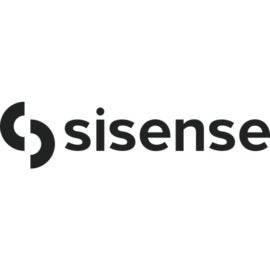Democratizing and leveraging data for the future: Interview with Amir Orad, CEO of Sisense
The way businesses access and use data has changed dramatically over the past several years, especially as data analytics tools have grown more user-friendly and other data platforms have begun offering self-service solutions. But, despite this growth in accessible data tools, the majority of companies still don’t leverage business data to its full potential, relying entirely on the capacity and capabilities of their data science teams — if they can even afford or find data scientists to hire.
SEE: Hiring kit: Data scientist (TechRepublic Premium)
To combat data scientist talent shortages and limited team bandwidths, many businesses are investing in tools and resources to democratize data access across new groups of employees and end users. Data democratization, alongside innovations like embedded analytics, is making it possible for business users of different backgrounds and even consumers to understand and apply data to their day-to-day lives.
Amir Orad, CEO of Sisense, a major business intelligence company, recently spoke with TechRepublic about the trends he’s seeing in data democratization, shifting data roles and responsibilities, and strategies for using data to create new revenue opportunities in today’s economy.
Jump to:
The push for data democratization in business
TechRepublic: Why are businesses increasingly democratizing their data? How did this trend first get started?
Orad: It first got started for the simple reason that they have more data than before, and they understand that data has more potential than they previously realized. When you have more of an asset and you know you can get more value from that asset, you want to take advantage of it. It’s that simple. If I had to pick another reason, it is that their peers and competitors are taking advantage of data assets more and more. If you’re left behind, it’s not a good thing.

I’m old enough to remember that, in about 2000, we had “Internet Companies.” That term is no longer relevant, as all companies now leverage the internet or they go bankrupt. Today, we talk about “data companies” and “data-driven companies.” In the future, there will simply be companies that leverage data and companies that are bankrupt. You really don’t have the option not to use data.
There are many different ways to achieve that democratized data culture. You don’t necessarily need a data science team to leverage a lot of your data; there are a few other techniques to do that, and actually, there are not enough data scientists on the planet to meet all current data needs. Even if you want to access that talent in the future, there will be many, many companies that cannot afford, cannot find or otherwise don’t have access to that data science talent.
The challenges of data democratization
TechRepublic: What are the biggest infrastructure obstacles you’ve seen to data democratization?
Orad: Let’s talk about the biggest one: The stats show that eighty percent of employees of organizations are not leveraging BI tools, data tools or analytics tools, and that’s been a consistent problem for a few good years.
Generation one of data analytics software was very IT-heavy — big, bulky software. It was very difficult to use, very cumbersome and accessible only to a select few. That dramatically limited access to data due to cost, technology and talent requirements.
One big breakthrough we made about a decade ago is helping, with the likes of Tableau and Power BI. They are simple desktop tools for business analysts that made adoption move up to about 20% of the population. What they do is reduce technical limitations: You no longer need the big, bulky IT system to put data tools and analytics tools in the hands of business analysts. The ongoing problem is that most people that live on the planet are not business analysts, but this technology definitely moved the adoption bar forward.
Most of today’s data tools are used by business-savvy people and business analysts who are experts in that domain. They often require a dedicated investment of energy because you may have some analytical tool that’s in a system outside of your day-to-day system. You have to remember to go to it, but it’s out of context and outside of your day-to-day workflow. So the issue of silent expertise and the lack of intuitive access, because it’s a side system, are causing this chasm that is still there.
That is where we are today. It’s not the technology, per se; it’s the fact that you need high skills to use the technology and it’s a separate technology you have to access on the side.
The rise of embedded analytics
TechRepublic: How can businesses solve current tooling and data democratization issues?
Orad: Let’s flip it around and assume you’re an individual consumer who is not a data analysis expert. Even then, you’re still consuming some of the most advanced AI and analytics on the planet every day when you watch Netflix, buy products on Amazon, use Google Maps, or use Facebook or Instagram to get recommendations. How are you as the consumer getting better access to stronger analytics than you as a businessperson?
What the consumer product companies are doing and what we’re not doing enough on the business side is embedding analytics into day-to-day products like Amazon and Instagram.
They’ve made it so simple that you don’t even notice it. In context, you’re not surprised when you get recommendations for a TikTok video just naturally within that workflow. You will never have to go to a separate system, login and type in an analytical query like ‘Show me all other videos I may like to watch on a Friday’ for the same results.
My approach and our approach at Sisense is recognizing that the best way to break the barrier of the other eighty percent who don’t effectively use data tools for their business is to be as good as TikTok, Amazon and Netflix are.
We infuse, inject or embed analytics and insights into the systems, tools and workflows that we use every day, and we make analytics intuitive and contextual — not putting them in another side system for a very small group of analytical people to access. That’s a technology shift, an approach shift and a talent shift, because you don’t have to be an expert anymore if analytics are embedded.
Tips and tricks for democratizing data access
TechRepublic: What are other important steps companies should take to make their data more usable?
Orad: In many of these companies, data is still spread around the organization in a very non-consumable way. If you have an oil field, it’s easy to tap into it, but if you have a thousand oil puddles, it’s a waste of time. Step one is to make the data accessible in some fashion. Big databases in the cloud have been a great solution in this area.
Step two is the decision to make the insights accessible to everyone, including your customers and external users. With the example I gave earlier, if you think about it from Netflix’s point of view, they are externalizing insights to their end users. A lot of companies sit on those data assets, but what they don’t realize is that they can make those insights accessible to their employees as well as to end users who want more information.
SEE: Data democratization tips for your business (TechRepublic)
We’ve talked about the cloud and centralizing the data and making data accessible to more groups of people. The last thing I would tell these companies is to dare to dream.
Analytics and data can do magical things, especially with AI and other modern capabilities. The big difference I see between people that are very successful and those who are somewhat successful with data is not the technology they use but rather their innovation and imagination.
I’ll give you an example of a crisis text line company we work with. If you go to San Francisco’s Golden Gate Bridge, on the bridge’s first post is a plaque that says “If you have bad thoughts about yourself, call this number.” When you call that number, people answer the phone to help you.
Someone very smart once had the idea that instead of relying on a human to think of the best thing to tell a person in distress, using machine learning to recommend some options based on past history, the demographics of the person, the weather and other factors. Now that they use that, they save more lives as a result. That wasn’t a technical innovation; it was an imaginative move, asking: “Can we do that?”
I think imagination and creativity are actually big proxies for leveraging these kinds of data technologies.
Data management roles and responsibilities
TechRepublic: How do you think data management roles and responsibilities need to change, especially with the data talent shortages we’re seeing?
Orad: I think we have to separate the people who ask the questions from the people who manage the environment. In the past, the data analyst was the person who was both organizing the data and asking questions about it.
With the introduction of strong AI capabilities like natural language and querying, we have the ability to just type up a data question in English in these systems. That means everyone can do it; you don’t need a dedicated expert.
SEE: Review the top data literacy training courses (TechRepublic)
Second, while you have data scientists who need to be involved in extreme edge cases, you actually don’t need them for a lot of the capabilities. Today, using AI and machine learning, we have access to out-of-the-box sophisticated focusing tools that do not require data scientists and data analysts. You just need a human being to give the tool the data and then it tries different techniques until it finds the most relevant one for your data’s seasonality, peaks and valleys, and other variables.
I think that data scientists are still very needed, but moving forward, they will be focused on more complex edge cases. All the common tasks we do will become automated with AI and machine learning; we’re seeing that in our own products more and more.
Data’s evolving role in the global economy
TechRepublic: Any final thoughts about the role of data in our global economy moving forward?
Orad: People speak of data as the new oil, but what they might not realize is that data can be monetized to generate revenue streams. It’s not just there to help you save money; it can also help you make money.
SEE: Hiring kit: Business information analyst (TechRepublic Premium)
That’s especially exciting as companies are looking for ways to survive the current economy. We have many customers — I’m talking about hundreds, if not over a thousand — who are generating revenue by using new data and data-enriched applications that we did not offer before. The time to innovate them is now more than ever because we have the data and we have the users who can benefit from that value-add.
Read next: Best business intelligence tools (TechRepublic)
About Amir Orad

Amir is CEO and chairman of the board of Sisense. With a focus on building and scaling companies, Amir has led startups to become industry leaders with hundreds of millions in revenue and multiple M&As. He is a serial entrepreneur, specializing in growing big data and cybersecurity businesses, with over 25 years of experience as a leader in these fields.
During his previous tenure at NICE Actimize, he grew the business 10x to a $200M revenue run rate. Previously he was co-founder of Cyota, which he sold to RSA Security. He holds an MBA from Columbia University and has been acknowledged as a Top 50 SaaS CEO.
Note: This interview has been edited for length and clarity.
For all the latest Technology News Click Here
For the latest news and updates, follow us on Google News.
